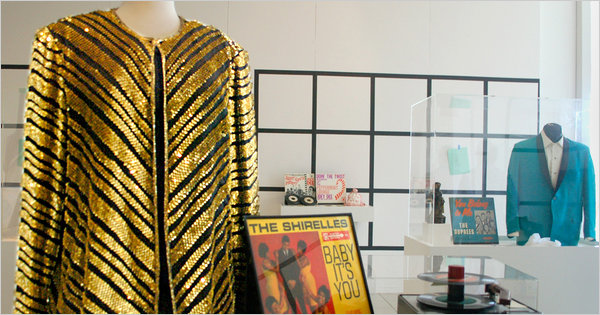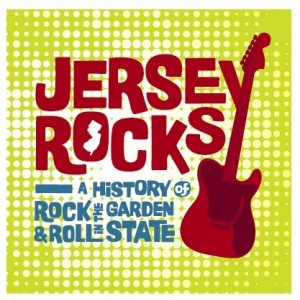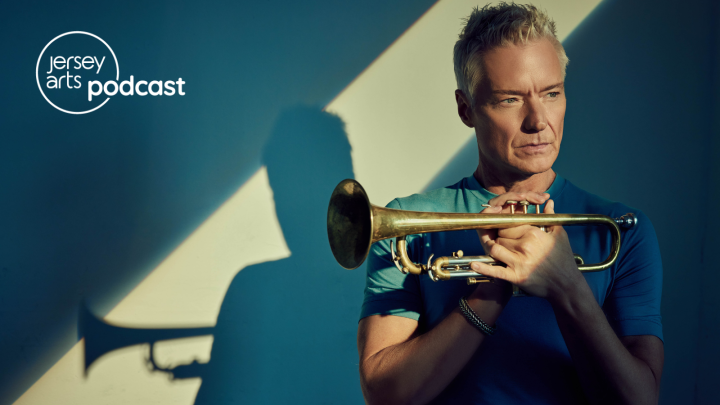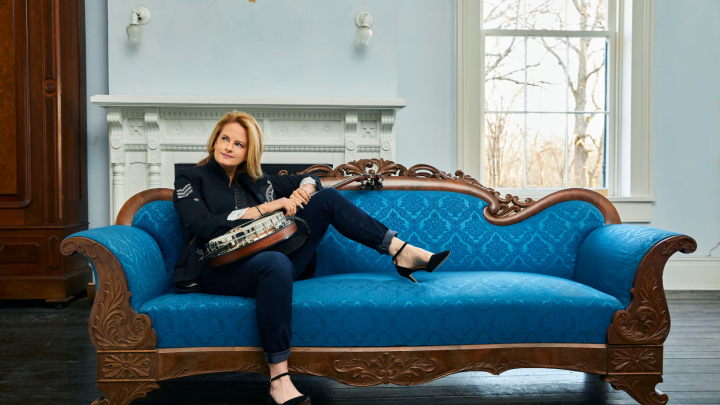Jersey Rocks: A Music Journalist's Thoughts

Gary Wien shares his thoughts on the Morris Museum’s Jersey Rocks exhibit, on view through September 4. Some people question why rock and roll has museums and halls of fame. They think it goes against the rebellious spirit of the genre. Not me. There’s nothing better than taking a tour of the past, reliving moments you were part of, and learning about what you missed. From now through September 4th, music fans get the opportunity to see New Jersey’s role in rock and roll history through an extensive exhibit called “Jersey Rocks” at the Morris Museum. The exhibit takes you on a tour of the artists, the promoters, writers, disc jockeys, venues, and even the inventions that deal with rock and roll. When you look around you’ll probably be amazed at how important New Jersey was to the genre’s history. But the truly amazing thing is that this exhibit only scratches the surface of Jersey’s part in rock and roll.
When most people enter the Jersey Rocks exhibit they are taken to an area detailing rock and roll’s early days. I, however, came through the wrong door and began at the present. One of the first things I saw was the question, “Where do you think rock music in New Jersey is headed today?” with various answers written on by previous visitors. The next thing I saw was Glen Burtnick’s Talking In Code album on the wall. It was then that I knew this wasn’t going to be a normal exhibit for me. These weren’t just museum relics, I actually knew some of these people. And that’s a pretty strange feeling...

Walking around the exhibit, I saw sections highlighting popular venues like Maxwells and the Stone Pony, festivals like Appel Farm and the Atlantic City Pop Music Festival, which pre-dated Woodstock by two weeks and was generally regarded as a test run of the festival that changed a generation. There was a nice blend of information about the artists, 45s and albums, posters, drum kits, gold records, and even sheet music. As someone who once tried to set up a physical museum like this, I have to say I was pretty impressed with the job they did. Nobody could come close to covering all of New Jersey’s rock and roll artists, but this exhibit does a good job covering the biggest names and includes several that many people would never associate with New Jersey.
Spread throughout the exhibit are quotes from music industry professionals like John Scher, Lenny Kaye, Jon Landau, and Les Paul. Quotes from regular people show up as well, including one from a then 16-year-old Kenny Puncerelli taken from a newspaper clipping in the 50s.
Asked what is rock ‘n roll, Kenny answered, “It’s the beat... It’s different from any other beat.”
Some of the most interesting items in the collection include Felix Cavaliere’s B3 organ used by The Rascals, 1950s General Electric portable radios, a 1953 Seeburg jukebox, a tuxedo jacket from 1962 worn by a member of the Duprees, the high school diploma of Connie Francis, a book of photographs from early doo wop groups, shoes worn by the 1910 Fruitgum Company, a reel-to-reel machine from the 1950s, a “be the DJ” interactive exhibit, a video of Last Bastions of Rock (about New Brunswick’s music scene), a mini replica of a diner, and my favorite -- a Panasonic portable 8-track player from the early 70s. I never knew they even made portable 8-track players, but there it was right next to a mint condition print ad describing the product, “It looks like a detonator. It sounds like dynamite.”
Two of the biggest artists in recent history from New Jersey -- Bruce Springsteen and Bon Jovi -- are featured prominently. In addition to many photographs of Springsteen, there’s a drum kit once played by Max Weinberg, and a look at Springsteen’s early days at the Upstage Club in Asbury Park. For anyone visiting, the band shown in the largest photo was called Steel Mill and was an extremely popular early band of Springsteen’s. The lead singer in the photo is actually Robbin Thompson, a guy who proudly jokes about being the last lead singer in a Bruce Springsteen band.
Likewise, a Bon Jovi section includes many rarities including a guitar, button collection, and a scrapbook made by a huge fan of the band. Seeing how fans followed artists throughout the decades was one of the most interesting aspects of the exhibit for me.
I also loved seeing the gold records -- an achievement that shows that while these artists may have begun in New Jersey, they now belong to the entire world. It also lends credibility to the exhibit. Anybody that wonders why we should care about local artists should take a look at the various gold records on display. The exhibit includes those by the Smithereens, Looking Glass -- authors of the brilliant “Brandy (“You’re A Fine Girl”), and even the Partridge Family for “I Woke Up In Love This Morning” which was written by Irwin Levine of Newark.
There are just so many artists on display from Pat Boone to Patti Smith; from the Duprees to Frankie Valle and the Four Seasons; Leslie Gore, Ricky Nelson, The Angels, Les Paul, and The Rascals -- the names just go on and on. There are song titles you know by heart and one-hit wonders spread throughout. Some of those artists, along with newer ones, are highlighted on a mixtape that plays through the museum speakers as you walk around.
There’s simply no way to include everything and if you asked a hundred music fans and music writers to name their favorite Jersey rock and roll artists you’d probably get a 100 completely different lists. And that’s what I love about the idea of an exhibit like this. People should know just how important New Jersey has been to rock and roll. The history is there and it continues to be written.




